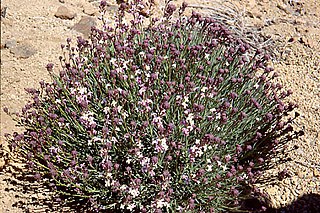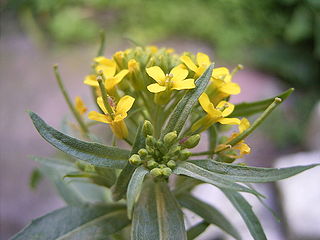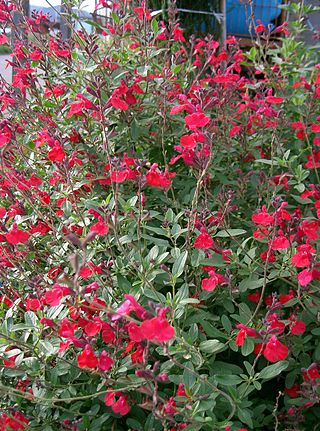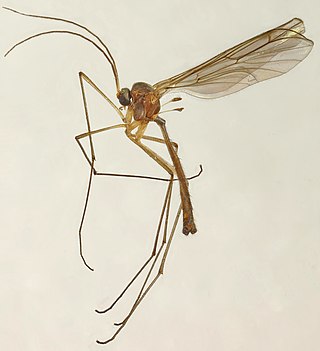
Brassicaceae or Cruciferae is a medium-sized and economically important family of flowering plants commonly known as the mustards, the crucifers, or the cabbage family. Most are herbaceous plants, while some are shrubs. The leaves are simple, lack stipules, and appear alternately on stems or in rosettes. The inflorescences are terminal and lack bracts. The flowers have four free sepals, four free alternating petals, two shorter free stamens and four longer free stamens. The fruit has seeds in rows, divided by a thin wall.

Erysimum, or wallflower, is a genus of flowering plants in the cabbage family, Brassicaceae. It includes more than 150 species, both popular garden plants and many wild forms. Erysimum is characterised by star-shaped and/or two-sided) trichomes growing from the stem, with yellow, red, pink or orange flowers and multiseeded seed pods.

Erica is a genus of roughly 857 species of flowering plants in the family Ericaceae. The English common names heath and heather are shared by some closely related genera of similar appearance. The genus Calluna was formerly included in Erica – it differs in having even smaller scale-leaves, and the flower corolla consisting of separate petals. Erica is sometimes referred to as "winter heather" to distinguish it from Calluna "summer heather".

Dasiphora fruticosa is a species of hardy deciduous flowering shrub in the family Rosaceae, native to the cool temperate and subarctic regions of the northern hemisphere, often growing at high altitudes in mountains. Dasiphora fruticosa is still widely referenced in the horticultural literature under its synonym Potentilla fruticosa. Common names include shrubby cinquefoil, golden hardhack, bush cinquefoil, shrubby five-finger, widdy, kuril tea and tundra rose.

Erysimum mediohispanicum is a perennial short-lived monocarpic herb found in many montane regions of eastern Spain where it is distributed between 800–2,000 m above sea level and inhabits forests, scrublands, and shrublands. It occupies two main regions in the Iberian Peninsula, one in the north and the other in the south-east. Erysimum mediohispanicum may be treated as one of a group or complex of six closely related species, or as Erysimum nevadense subsp. mediohispanicum.

Erysimum nevadense is a perennial short-lived herb endemic to the Sierra Nevada of Spain, although there are some citations in the nearby Sierra de Gádor (Almería). This wallflower occurs between 1,700 and 2,700 m above sea level in subalpine scrublands and alpine meadows. It may be treated as a narrowly circumscribed single species, one of a group or complex of six separate species, or as a more broadly circumscribed species with six subspecies.

Erysimum cheiranthoides, the treacle-mustard,wormseed wallflower, or wormseed mustard is a species of Erysimum native to most of central and northern Europe and northern and central Asia. Like other Erysimum species, E. cheiranthoides accumulates two major classes of defensive chemicals: glucosinolates and cardiac glycosides.

Erysimum cheiri, syn. Cheiranthus cheiri, the wallflower, is a species of flowering plant in the family Brassicaceae (Cruciferae), native to Greece, but widespread as an introduced species elsewhere. It is also treated as a hybrid under the name Erysimum × cheiri. It is widely cultivated as a garden plant.

Salvia microphylla, synonyms including Salvia grahamii, Salvia lemmonii and Salvia neurepia, the baby sage, Graham's sage, or blackcurrant sage, is an evergreen shrub found in the wild in southeastern Arizona and the mountains of eastern, western, and southern Mexico. It is a very complex species which easily hybridizes, resulting in numerous hybrids and cultivars brought into horticulture since the 1990s. The specific epithet microphylla, from the Greek, means "small leaved". In Mexico it is called mirto de montes, or "myrtle of the mountains".

Bolitophila is the sole living genus in the Bolitophilidae, a family of Diptera in the superfamily Sciaroidea, with around 40 Palaearctic and about 20 Nearctic species, and three species from the Oriental region (Taiwan). They are small (6–9 mm).

Erysimum scoparium is a species of flowering plant in the family Brassicaceae, native to the Canary Islands. It is a shrubby species of wallflower with purplish flowers found at high altitudes.

Erysimum collinum is a plant species in the family Brassicaceae. It is a member of the genus Erysimum, which includes between 150 and 350 species in the Northern Hemisphere.

Erysimum crepidifolium, the pale wallflower, is a plant species in the crucifer family, Brassicaceae. It is a member of the genus Erysimum, which includes between 150 and 350 species in the Northern Hemisphere.
Erysimum fitzii is a biennial or short-lived perennial plant native to southern Spain. It has been treated as one of a complex of six species making up the nevadense group, or as Erysimum nevadense subsp. fitzii.
Erysimum gomez-campoi is a short-lived biennial or perennial plant native to southern Spain. It has been treated as one of a complex of six species making up the nevadense group, or as Erysimum nevadense subsp. gomez-campoi.
Erysimum merxmuelleri is a biennial or short-lived perennial plant native from eastern Portugal to western Spain. It has been treated as one of a complex of six species making up the nevadense group, or as Erysimum nevadense subsp. merxmuelleri.
Erysimum rondae is a biennial or short-lived perennial plant native to southwestern Spain. It has been treated as one of a complex of six species making up the nevadense group, or as Erysimum nevadense subsp. rondae.
Eduard Voss was a German entomologist, who specialized in beetles (Coleoptera), in particular the weevil family (Curculionidae). He described many new species and a number of beetles are named after him. Much of his beetle collection was lost in World War II, but some of the remaining collection is held in the Zoologischs Museum Hamburg.

Arabidella trisecta is a species of flowering plant belonging to the family Brassicaceae. It was first described in 1853 by Ferdinand von Mueller as Erysimum trisecta, but was transferred to the genus, Arabidella in 1924 when by Otto Eugen Schulz elevated Mueller's subgenus Arabidella to genus status. No type specimen was indicated by Mueller in 1853, and in 1965 Elizabeth A. Shaw specified the lectotype as MEL 758 and a paralectotype MEL 0000778A, both collected by Mueller from Spencers Gulf in South Australia.














